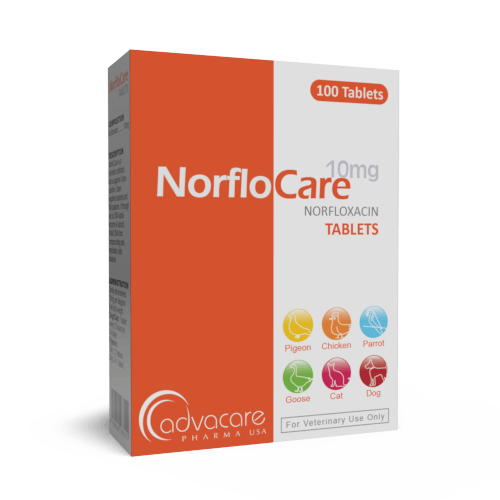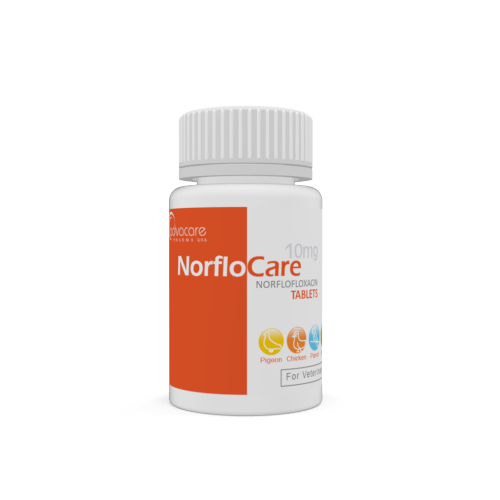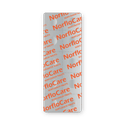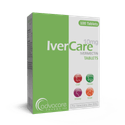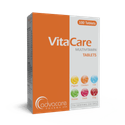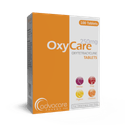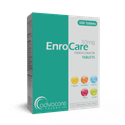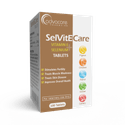- Home›
- Veterinary Pharmaceuticals›
- Veterinary Tablets›
- Norfloxacin Tablets
Norfloxacin Tablets
Dosage
Packaging
What is Norfloxacin?
Active Ingredients: Norfloxacin
Norfloxacin Tablets are an antibiotic drug used to treat bacterial infections in poultry, ornamental birds, and companion animals like cats and dogs. It is indicated for infections such as respiratory system infections, gastrointestinal infections, urinary tract infections, paratyphoid, and mycoplasmosis.
Norfloxacin is a quinolone carboxylic acid derivate, and it is a synthetic antibiotic. It is widely used for treating urinary and intestinal infections. Most veterinary and human drugs from this group of antibiotics belong to the second generation of fluoroquinolones. This antibiotic has DNA-gyrase binding sites. These antibiotics are amphoteric and are poorly soluble at pH 6-8. This means that the drug is more effective in non acidic urine pH than in acidic. In an acidic environment, this drug forms needle-shaped crystals. Liquid forms of this antibiotic for oral or parenteral administration contain free soluble salts in stable aqueous solutions. Other forms of this antibiotic, such as tablets, capsules, or boluses contain betaine or hydrochloride salt form.
This antibiotic inhibits the bacterial enzyme topoisomerase which causes bacterial DNA to supercoil and uncoil during replication. The topoisomerase in mammals differs from the bacterial gyrase and does not get destroyed during antibiotic treatment. Norfloxacin has bactericidal property, and bacteria loses viability within 20 minutes after exposure to the optimal concentrations. This antibiotic has a post antimicrobial effect in many gram-negative bacteria such as Escherichia coli, Klebsiella pneumoniae, and P aeruginosa. The effect lasts 4-8 hours after exposure.
Norfloxacin is classified as a fluoroquinolone antibiotic. It works by binding to the enzyme, DNA gyrase, which therefore blocks DNA replication within the bacteria. Norfloxacin is effective against Mycoplasma and both gram-positive and most gram-negative bacteria, including Cаmруlоbасtеr, E. coli, Hаеmорhіluѕ, Pаѕtеurеllа, Sаlmоnеllа.
This product is also available as a soluble powder and oral solution.
It is important to note that Norfloxacin Tablets are for veterinary purposes only.
Norfloxacin Tablets are produced and exported by AdvaCare Pharma. Our production facilities are routinely audited to ensure they meet the rigorous standards for GMP certification. Our company offers a wide range of livestock medicines supplies that are available for global distribution.
Why choose us as your Norfloxacin manufacturer?
Norfloxacin Tablets, manufactured and globally supplied by AdvaCare Pharma, are one of our 250+ veterinary medicines. From supply chain coordination to product registration support, our professional teams of specialists and experts provide our veterinary distributors unparalleled support. As a trusted Norfloxacin manufacturer, veterinarians and farmers alike rely on our high-quality veterinary tablets manufactured according to GMP standards.
Uses
What is Norfloxacin used for?
It's used to treat bacterial infections, such as:
- urinary tract infections
- gastrointestinal tract infection
- salmonellosis
- respiratory infections
What animals can be treated with Norfloxacin Tablets?
It's recommended for poultry, ruminants, ornamental birds, and companion animals like dogs and cats.
What are the most common urinary tract infections treated with Norfloxacin Tablets?
Norfloxacin and other fluoroquinolones are used for the treatment of complicated urinary infections like acute pyelonephritis. This antibiotic causes high microbiologic eradication rates ranging from 79.8% to 95.3%. E.coli is the most common uropathogen and this antibiotic shows great activity against it.
What are the most common gastrointestinal tract infections treated with Norfloxacin Tablets?
Norfloxacin is useful in treating Enterobacteriaceae. According to a study, after 3-5 days of treatment animals become free of this bacteria and have negative test results after 3 days with higher doses.
What are the most common respiratory infections treated with Norfloxacin Tablets?
Norfloxacin is effective against Mycoplasma spp. This bacteria does not have a cell wall and the antibiotic has a bactericidal effect and works on destroying the DNA of the bacteria. The choice of the antibiotic depends on the veterinarian in the end and depends on the infection severity. This antibiotic has also shown efficiency against Staphylococcus spp. and Pseudomonas aeruginosa.
What are the different ways of administering Norfloxacin?
The most common way of administering Norfloxacin is oral, but for severe cases, injections are required. The injection can be administered intravenously, intramuscularly, and subcutaneously because in this case, the absorption is rapid. After oral administration, blood concentrations peak within 1-3 hours. The bioavailability is bigger than 80% for small animals. In ruminants, the oral bioavailability is extremely low. The presence of food can reduce the absorption in monogastric animals like companion animals. Antacids can also lower the efficiency of the antibiotic.
The general effect of this antibiotic depends on the plasma concentrations. The drug is concentration-dependent.
How are Norfloxacin Tablets used?
This medicine has been manufactured as a tablet, which is intended to be given orally to an animal.
How should Norfloxacin Tablets be stored?
This medication should be stored in a dark, dry location under 30°C. Keep the bottle tightly sealed when not in use.
Is there a withdrawal period after treatment with Norfloxacin Tablets?
The withdrawal time is 4 days.
Dosage
How many Norfloxacin Tablets should be given to ornamental birds?
The usual dose is 2 tablets as an initial dose on the first day. Then administer 1 tablet on days 2-4.
How many Norfloxacin Tablets should be given to dogs or cats?
The usual dose is 1 tablet, given every 12 hours for 2-4 consecutive days.
Refer to a veterinary doctor or pharmacist for guidelines on dosage.
Side Effects
As with all pharmaceuticals, some unwanted effects can occur from the use of Norfloxacin Tablets.
Hypersensitivity reactions have been recorded for this medicine.
High doses of this antibiotic may cause liver toxicity or crystalluria.
According to animal studies on rats, pregnant females can have some side effects after taking Norfloxacin. The side effects include a decrease in the number of viable fetuses and fetal body weight, as well as an increase in the number of resorbed fetuses. There are also pathological alterations in the liver, kidney, and placenta. The pregnant animals can have increased ALT and AST, serum levels of urea and creatinine, as well as decreased serum albumin, and total protein levels. There is a risk of embryotoxic and teratogenic effects in fetuses.
Neurological effects may manifest even after the first dose. Administration to juvenile animals can lead to arthropathy. Observe the animal carefully from the moment of administration until a few hours. If any negative effects occur, seek professional help. The most common neurological signs are dizziness and loss of coordination.
For a comprehensive list of all possible side effects of this medication, consult a veterinary doctor.
Precautions
Do NOT use Norfloxacin Tablets for an animal that:
- has a known allergy or hypersensitivity to any of the ingredients.
- has a known allergy or hypersensitivity to other quinolone antibiotics.
- has ѕеrіоuѕlу impaired hераtіс аnd/оr rеnаl funсtіоn.
- is a dog younger than 6 months old.
Treatment with this drug should be administered with caution for an animal that:
- is pregnant.
- has had or is predisposed to seizures.
Patients with hepatic and renal dysfunctions can have many side effects after treatment with Norfloxacin. The veterinarian should perform blood tests and urine analysis before administering this antibiotic.
Ensure adequate fluids are available, as crystalluria may occur in dehydrated animals. Crystalluria might be clinically not significant for most animals as it is an accidental finding. If the animal has a high level of dehydration, hydrate it intravenously and then apply antibiotic drugs and other supplements.
Pregnant and lactating animals should have limited usage of Norfloxacin. Part of the antibiotic can be excreted through milk and can cause unwanted side effects in newborns.
If the animal is allergic to Norfloxacin, the most common side effects are scratching, difficulty breathing, or swelling. If you notice these symptoms after Norfloxacin administration, consult with a professional as soon as possible.
Concomitant administration with corticosteroids has caused tendinitis in rare cases.
Follow the recommended dosage prescribed by a veterinarian. If you miss a dose, do not give two doses at once. Not following the recommended dosage with antibiotics can cause antibiotic resistance, which can cause problems in health management in animals.
It is not recommended to use this drug at the same time as tetracyclines, macrolides, or chloramphenicol.
What are the most common animals Norfloxacin Tablets are used for?
Norfloxacin Tablets are primarily used to treat the following health issues in poultry, ruminants, ornamental birds, and companion animals like dogs and cats:
- urinary tract infections
- gastrointestinal tract infection
- salmonellosis
- respiratory infections
Poultry Infection Treatment
Norfloxacin tablets in poultry are mostly used for treating salmonellosis and respiratory infections.
Ruminant Infection Treatment
Norfloxacin in ruminants can be used for treating bacterial infections like Mycoplasma spp., some urinary tract infections, and gastrointestinal infections.
Companion Animals Infection Treatment
In companion animals, this antibiotic is mostly used for treating urinary infections and cystitis in female animals.
The choice and the dose of the drug depend on the veterinarian and the results from the blood analysis. Bacteriologic culture can also help in the choice of the antibiotic.

You might be interested in...
Why AdvaCare Pharma?
As an industry leader, we are aware of our responsibility to provide affordable and sustainable solutions to improve healthcare worldwide.
